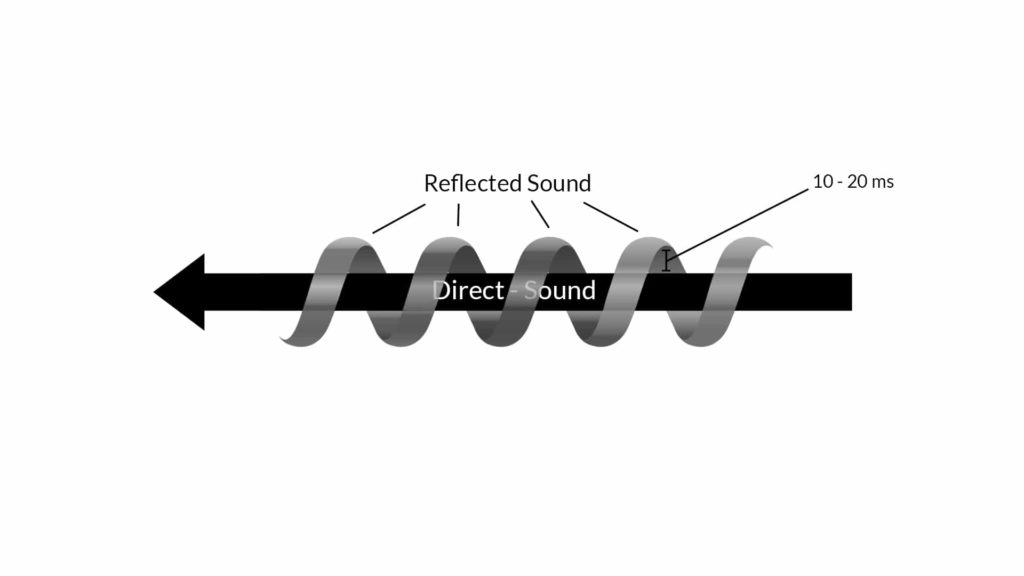
Sound reflections are a key factor in determining the acoustics of a room. When sound waves strike a surface, some of the energy is absorbed and some is reflected back into the space. The way that sound reflects off of surfaces in a room can have a significant impact on how sound is perceived by those within the space.
The first type of sound reflection is known as the direct sound. This is the sound that travels directly from the source to the listener’s ears, without any reflections. This type of sound is important because it is the sound we want to hear, and it carries the most information.
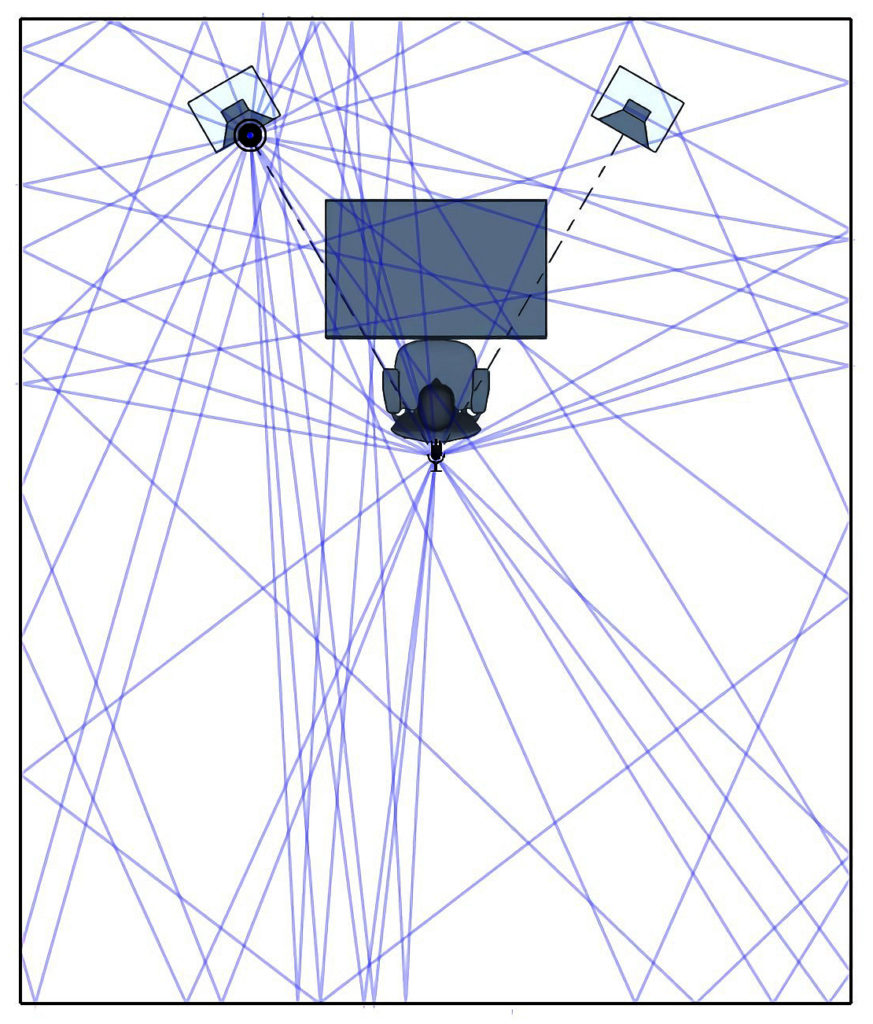
Sound reflections & room perception
However, reflections also play a big role in how we perceive sound. When sound reflects off of surfaces, it creates a phenomenon known as the reverberant sound field. This is the sound that is heard after the direct sound has reached the listener’s ears. It is a result of the sound reflecting off of the surfaces in the room and traveling to the listener’s ears from multiple directions.
The reverberant sound field can have both positive and negative effects on the acoustics of a room. In a good room acoustics, the reverberant sound field should enhance the direct sound, providing a sense of spaciousness and warmth to the sound. However, if the sound reflections are too strong or not managed properly, the sound can become muddy, muffled, and difficult to understand.
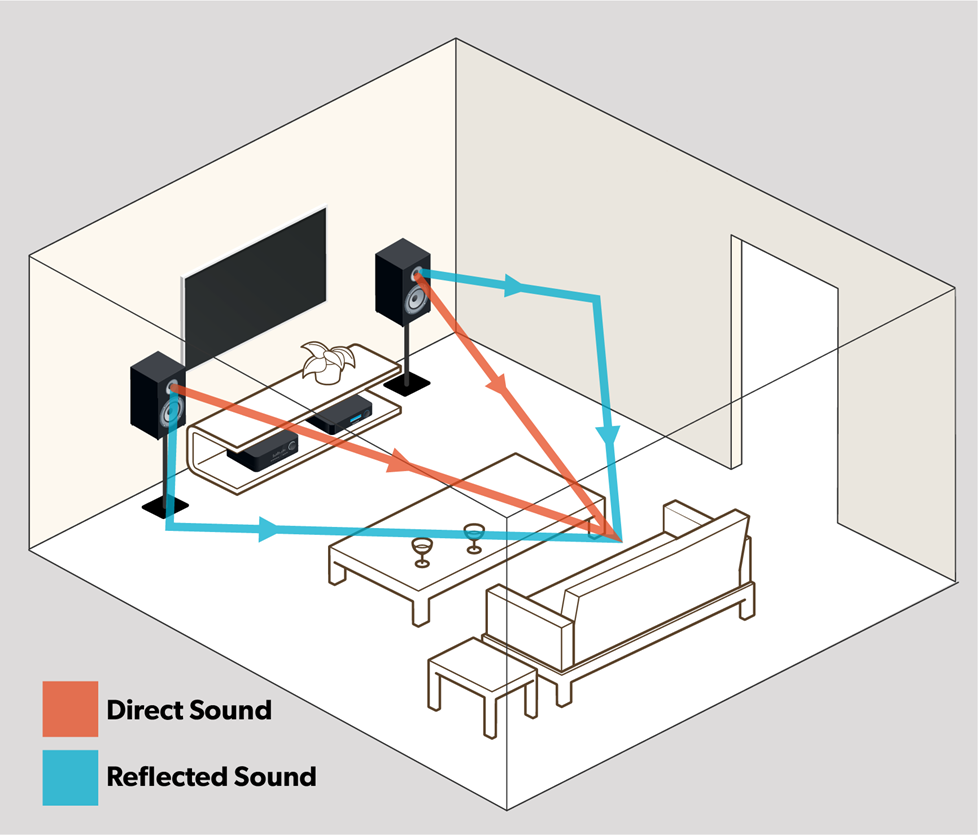
Reverberation times
The reverberation time, which is the time that sound takes to decay by 60 decibels after the sound source stops, is a measure of the reverberant sound field in a room. Different rooms will have different reverberation times, depending on the size, shape, and surface materials of the room. In general, a reverberation time of less than 1 second is considered good for speech intelligibility, while a reverberation time of 1-2 seconds is considered good for music.
To improve room acoustics and control sound reflections, different techniques and materials can be used. For example, soft surfaces such as carpet, drapes, and fabric-covered walls will absorb sound, reducing the reverberant sound field. Hard surfaces, such as concrete or tile, will reflect sound, increasing the reverberant sound field. To reduce the reverberation time and increase speech intelligibility, sound diffusers and sound-absorbing panels can be used to scatter the sound.
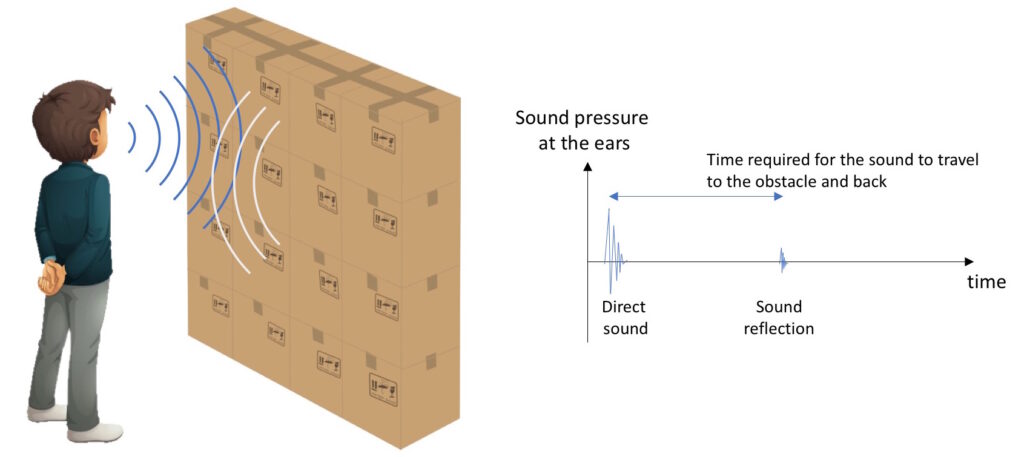
Summary
So sound reflections are a key factor in determining the acoustics of a room, and they can have both positive and negative effects on how sound is perceived. The reverberant sound field, which is the sound that is heard after the direct sound, can enhance the direct sound or make it hard to understand. The reverberation time, which is the time that sound takes to decay, is a measure of the reverberant sound field in a room. To improve room acoustics, different techniques and materials can be used, such as sound diffusers and sound-absorbing materials, to control and enhance sound reflections.


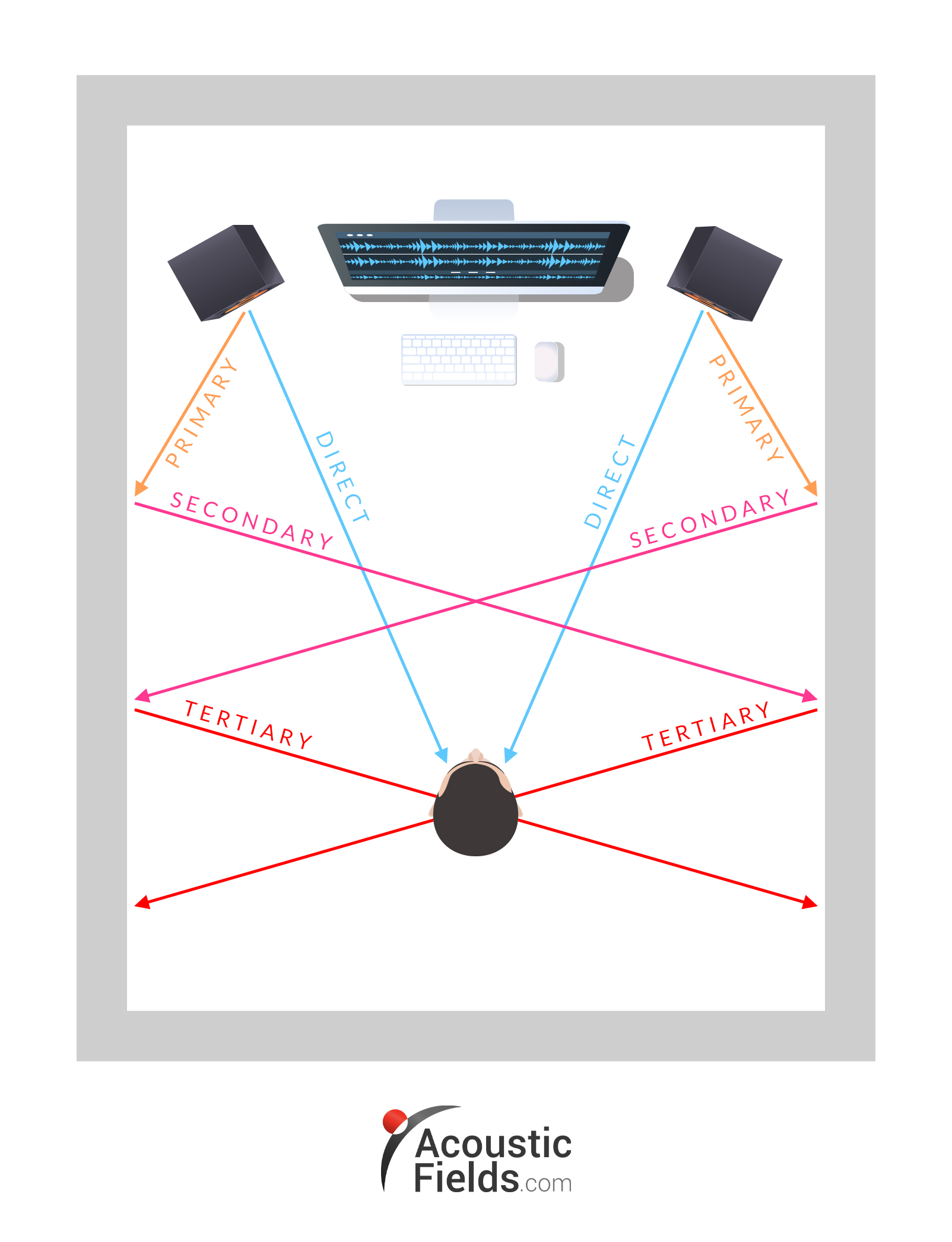





Can the quality of a sound reflection identify the reflection source?
If you know the frequency and amplitude of the reflection, you have a better chance of identifying sources.